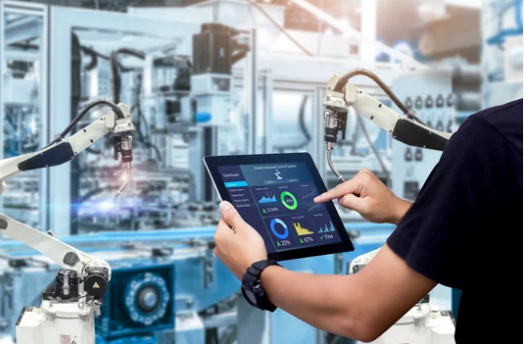As humanity looks beyond Earth, the need for reliable and sustainable energy sources in space has never been greater. Space nuclear reactors represent a cutting-edge frontier in engineering, offering a consistent and high-density power supply for spacecraft, lunar bases, and Mars missions. Unlike solar arrays, which are limited by distance from the Sun or planetary shadows, nuclear reactors can deliver continuous energy regardless of location.
This article explores the engineering behind space nuclear reactors, their applications, challenges, and the future of extraterrestrial energy systems.
Why Nuclear Energy in Space?
Space missions face unique constraints: extreme temperatures, limited sunlight, and high energy demands for propulsion, life support, and scientific instrumentation. Nuclear reactors are attractive because they:
- Provide Continuous Power: Operate independently of sunlight or planetary cycles.
- Support Long-Duration Missions: Enable extended lunar or Martian habitats.
- Reduce Mass: High energy density means less fuel and fewer batteries compared to solar.
- Enable Advanced Propulsion: Supports nuclear thermal or electric propulsion systems for deep-space missions.
Engineering Principles of Space Nuclear Reactors
Space nuclear reactors differ significantly from terrestrial reactors, requiring specialized engineering approaches:
Compact Design
Reactor cores must be lightweight yet robust, often using high-density fuels like uranium-235 or uranium nitride. Compact cores reduce spacecraft mass while maintaining sufficient energy output.
Heat Management
Efficient thermal control is critical. Space reactors use heat pipes, radiators, and sometimes liquid metal cooling to remove excess heat, preventing overheating in the vacuum of space.
Radiation Shielding
Protecting astronauts and sensitive electronics is a top priority. Engineers design multi-layer shielding using materials such as lithium hydride, tungsten, and boron carbide to minimize radiation exposure.
Autonomous Operation
Due to communication delays with Earth, space reactors must operate autonomously. Advanced sensors, AI-based control systems, and fail-safe mechanisms are essential for safe long-term operation.
Applications of Space Nuclear Reactors
Spacecraft Propulsion
Nuclear reactors can power electric thrusters or thermal rockets, reducing travel time to Mars or the outer planets and improving mission efficiency.
Lunar and Martian Bases
Permanent or semi-permanent habitats on the Moon or Mars require reliable electricity for life support, scientific research, and resource processing. Nuclear reactors provide a stable energy backbone.
Deep-Space Exploration
Outer solar system missions, where sunlight is insufficient for solar panels, rely on nuclear power for propulsion, communications, and onboard systems.
Satellite Systems
High-energy satellites, especially in geostationary or interplanetary applications, may use small nuclear reactors to maintain continuous operation.
Engineering Challenges
Designing nuclear reactors for space is technically demanding:
- Extreme Environments: Reactors must withstand launch stresses, microgravity, radiation, and thermal extremes.
- Weight and Size Constraints: Every kilogram counts, requiring highly optimized reactor and shielding designs.
- Safety Risks: In the event of launch failure, preventing radioactive contamination requires robust containment strategies.
- Long-Term Reliability: Space missions may last decades, necessitating components that operate reliably without maintenance.
Current Projects and Research
Kilopower (NASA)
NASA’s Kilopower project develops small fission reactors capable of producing up to 10 kW of electricity, designed for lunar and Martian missions. Kilopower prototypes demonstrate long-duration autonomous operation.
Fission Surface Power (FSP)
FSP aims to provide 40–100 kW of continuous power for lunar bases, integrating advanced heat management and modular reactor designs.
Russian TOPAZ Reactors
Historically, Russia developed TOPAZ reactors for satellites and space applications, showcasing compact thermionic designs capable of long-term operation in orbit.
The Future of Space Nuclear Engineering
Future space missions will demand larger and more efficient nuclear systems. Concepts include:
- Nuclear Thermal Propulsion (NTP): Uses reactor heat to accelerate propellant, reducing travel time to Mars.
- Next-Generation Compact Reactors: Enhanced fuel cycles and advanced shielding materials will allow smaller, safer, and more powerful reactors.
- International Collaboration: NASA, ESA, Roscosmos, and private space companies are exploring joint projects to standardize reactor technology and share expertise.
Conclusion
Space nuclear reactors are revolutionizing how humanity approaches energy beyond Earth. By providing high-density, reliable, and continuous power, these engineering marvels enable ambitious missions—from lunar bases to deep-space exploration.
While challenges remain in safety, reliability, and cost, ongoing research and international collaboration are pushing the boundaries of what is possible. Nuclear engineering is not only fueling our satellites and spacecraft—it is powering humanity’s journey to the stars.
Also Read :
